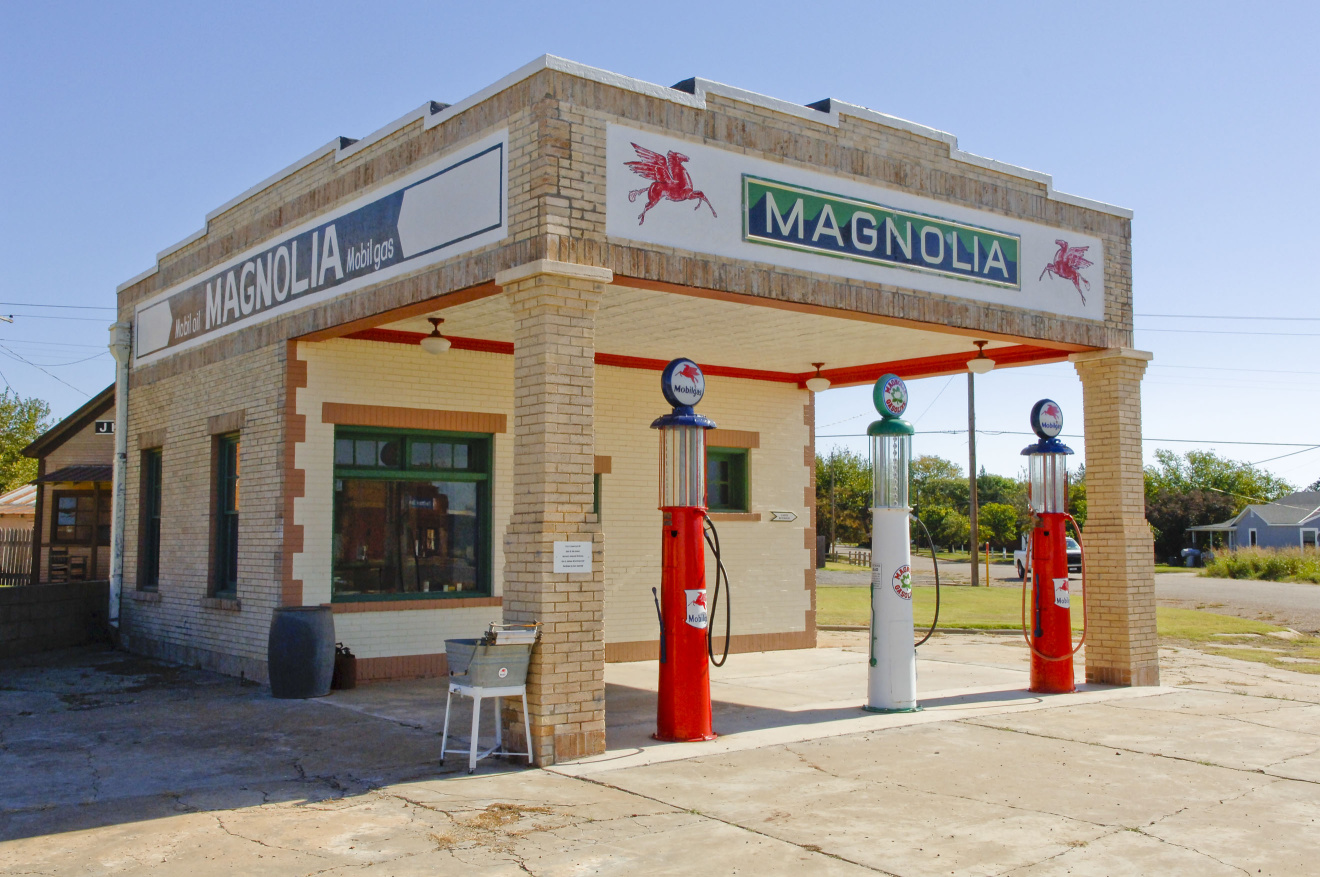
An early gas station in Shamrock. Photo: Stan A. Williams
Members of the National Trust for Historic Preservation are hitting the road in hopes of saving one of the nation’s most iconic byways—Route 66.
The team will travel the route’s Texas stretch through Panhandle cities like Shamrock, McLean, and Amarillo from July 17-19. They’ll host meetups at various locations for anyone interested in the history of Route 66 and its iconic buildings.
For the meetup schedule and to sign an online petition to help designate Route 66 a National Historic Trail, visit preserveroute66.org.
“Certainly along the 2,400-plus miles of Route 66, there are places that have been restored and are operating as successful businesses,” said Amy Webb, a senior field director with the national trust, which included the route on its 11 Most Endangered Places of 2018. “At the same time, we also know that there are many sites that are in danger.”
The national trust aims to help Route 66 earn a National Historic Trail designation by the end of the year. Through the designation, Webb hopes businesses will see increased traffic and much-needed restorations.
The trust, a nonprofit group based in Washington, D.C., recently named the route a “national treasure,” a title given to places that are integral to the nation’s history. Including the entirety of Route 66 on the list is meant to feature all the vintage hotels, neon signs, gas stations, and other businesses along the route, as well as its infrastructure.
In addition to learning about the historic route, meetup visitors can win Route 66 swag and visit historic places like the Tower Station in Shamrock and the Midpoint Cafe in Adrian.
Grant Stevens, a community outreach manager for the national trust who will be on the road through Texas, said the road trippers are cautiously optimistic about the route’s chances of designation. He said he’s enjoyed observing the highway’s impact on communities along its path.
“A piece that’s stood out to me is people’s connections to Route 66,” Stevens said. “There are people who just travel for the food and the diners, there are people who love the classic cars and the architecture. People have all these different entry points to Route 66, and that’s one of the most fascinating aspects.”
The route is facing challenges from both urban areas and rural areas, Webb said. In growing cities, vintage hotels and gas stations are in danger of being destroyed; meanwhile, the convenience of newer highways keeps travelers away from the businesses along rural stretches. Although it won’t solve all the problems facing businesses along the route, the designation could provide essential financial assistance from the National Parks Service to some businesses.
First constructed in 1926, Route 66 was one of the original stretches of highway in the U.S., spanning from Chicago, Illinois, to Los Angeles, California. It acted as a pathway to the west during the Great Depression and has since become a symbol of American pride.








